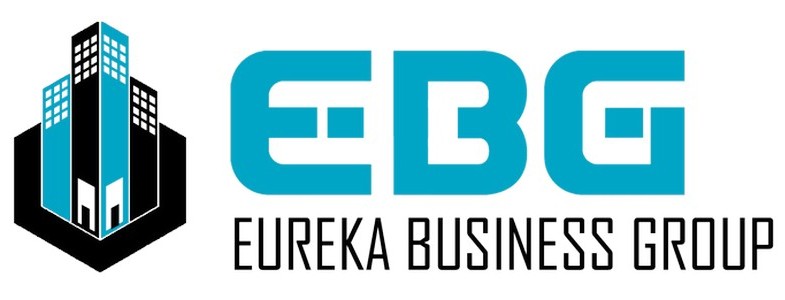- Home
- Industrial
- Industrial Investors Resources
- How to Identify High-Potential Industrial Flex Locations!
How to Identify High-Potential Industrial Flex Locations!
Industrial flex spaces have become a hot commodity in real estate, offering a flexible combination of office, manufacturing, and warehouse capabilities under one roof. As businesses evolve, many are opting for this versatile property type to meet their changing needs. Investors, developers, and business owners alike are eyeing industrial flex spaces as high-potential real estate investments. But how do you identify the best locations for industrial flex properties? In this blog, we’ll explore the key factors that make certain locations prime for industrial flex development and how to assess them.
1. Understanding What Industrial Flex Spaces Are
Before diving into how to identify prime locations, it’s essential to understand what an industrial flex space is. These spaces are multi-functional properties designed to cater to various business operations, combining office, warehouse, and light manufacturing spaces. Unlike traditional industrial or office spaces, they can be adapted to a wide range of uses, making them highly desirable for businesses in technology, logistics, manufacturing, and even creative industries.
Businesses seeking flexibility often choose these spaces because they can lease or own a property that accommodates various functions under one roof, saving time and reducing operational expenses. For investors, this adaptability can lead to high occupancy rates and long-term tenants.
2. Proximity to Major Transportation Hubs
One of the first things to evaluate when identifying high-potential industrial flex locations is the proximity to major transportation hubs. Industrial tenants often require fast access to highways, airports, railroads, and ports for the efficient transportation of goods. When assessing a location, consider how easily tenants can reach logistics networks, particularly if the area has strong links to regional, national, or international shipping routes.
For example, properties close to major highways or interstates are highly desirable as they allow tenants to quickly transport goods between facilities or to customers. Similarly, proximity to a large airport or a major seaport can offer significant logistical advantages for companies involved in international trade.
3. Access to Skilled Labor
Access to a skilled workforce is another crucial factor when choosing a location for industrial flex spaces. Different businesses have varying labor needs, but many require skilled workers for manufacturing, technology, and logistical operations. A location with a growing or established talent pool can increase the desirability of an industrial flex space, as it makes it easier for businesses to hire and retain employees.
When assessing a market, investigate local employment trends, education systems, and nearby training programs. Proximity to technical schools, universities, or labor-rich areas can make an industrial flex space more attractive to potential tenants. Additionally, regions with a strong labor force in sectors such as logistics, technology, or manufacturing will often see higher demand for these types of spaces.
4. Zoning and Regulatory Considerations
Another critical factor in identifying high-potential industrial flex locations is understanding local zoning laws and regulations. Industrial flex spaces often require specific zoning permissions that accommodate a mix of office and industrial activities. Be sure to research whether the location you’re considering is properly zoned for industrial flex use or whether it will be challenging to get the necessary approvals.
Moreover, local building codes, tax incentives, and regulations around noise, waste, and traffic will affect the suitability of a location for industrial flex spaces. Municipalities that encourage industrial development by offering tax breaks or grants to businesses can boost the appeal of a location for both tenants and investors.
5. Economic Growth and Stability
One of the hallmarks of a high-potential industrial flex location is economic stability and growth. Areas with strong economies are more likely to have a robust demand for industrial flex space, as businesses continue to expand and seek versatile real estate options.
Look for markets where local or regional economies are diverse, with growth in sectors like manufacturing, technology, logistics, or healthcare. A growing economy suggests that businesses will need additional space to accommodate increased operations, and industrial flex properties are an excellent solution for their dynamic needs.
Additionally, consider whether the location is seeing population growth. As more people move into an area, there’s typically an uptick in commercial and industrial activity, increasing demand for industrial flex spaces.
6. Affordability and Availability of Land
For developers and investors, the cost of land and development plays a significant role in identifying high-potential industrial flex locations. Regions where land is affordable and readily available may offer better opportunities for the development of these spaces, especially in comparison to areas where land prices have already spiked.
Emerging markets and suburban locations on the outskirts of major metropolitan areas are often prime candidates for industrial flex spaces because they tend to have lower land costs than city centers. Additionally, these areas may be more likely to have large parcels of land available for industrial development, making them a good option for investors seeking long-term growth.
7. Market Demand and Competition
Assessing current market demand is essential in determining whether a location is suitable for industrial flex spaces. Are there already businesses in the area that would benefit from this type of space? Is there a gap in the market that industrial flex properties could fill? Investigating current vacancy rates, rental prices, and overall industrial space availability in the area will give you a better understanding of how much competition exists and whether there is unmet demand.
Additionally, locations that are experiencing a rise in e-commerce or logistics operations will likely have increased demand for industrial flex spaces. As businesses in these sectors look for flexible and affordable space, industrial flex properties become a natural fit.
8. Proximity to Supporting Infrastructure
Industrial flex spaces need more than just transportation access and land—they also require reliable infrastructure, including utilities, broadband internet, and other necessary amenities. In today’s economy, high-speed internet access and other tech-forward infrastructure are essential for businesses in sectors like technology and logistics.
Make sure that any potential location for an industrial flex space has access to modern infrastructure, including power, water, internet, and transportation networks. This is particularly important if the space will be used for light manufacturing or other energy-intensive operations.
9. Community and Government Support
Community support for industrial development is another factor that can influence the success of an industrial flex location. Some areas are eager to attract new businesses and investors by offering tax incentives, grants, or other financial benefits to developers. Communities that actively support industrial development tend to create a business-friendly environment, which can be a significant advantage when attracting tenants.
10. Trends in Flex Space Growth
Finally, keep an eye on industry trends. As businesses shift toward more remote or hybrid work models, many are downsizing their office spaces while increasing demand for flex space that offers both office and industrial functionality. Locations that can accommodate these changing needs are likely to see increased demand for industrial flex properties.
The rise of e-commerce, supply chain diversification, and technological innovation are all trends driving demand for flexible industrial spaces. Cities or regions that embrace these trends, investing in infrastructure and supporting business growth, are likely to become hotspots for industrial flex development.
Conclusion
Identifying high-potential industrial flex locations requires a mix of market research, economic analysis, and on-the-ground investigation. By focusing on factors like transportation access, labor availability, zoning, economic stability, and infrastructure, you can zero in on locations that are primed for growth and success in the industrial flex sector. As businesses continue to seek flexible, multi-functional spaces to meet their changing needs, investing in the right location will be key to maximizing returns in this lucrative market.



